Jennifer Arellano
Social Media & Content Manager at Qinera
Read more postsThis article from Rehasalud, a neurorehabilitation centre located in A Coruña (northwest Spain), illustrates how multisensory rooms have become a key element in supporting neurological recovery processes. Through specific case examples and testimonials we discover how these spaces are used to enhance therapy through a sensory, human, and personalised approach.
Let’s get into it 👇.
Effective neurological rehabilitation is based on four key pillars: neuropsychology, physiotherapy, speech and language therapy, and occupational therapy. At Rehasalud we use a multisensory room which makes a meaningful difference and enhances the work within each of these areas.
Our team of specialists in neurorehabilitation and comprehensive functional rehabilitation firmly believes in the value of a sensory stimulation environment as therapeutic support.
As Irene Suárez, coordinator and speech and language therapist, points out: “This space enables us to offer more comprehensive therapies, where the sensory environment becomes a positive stimulus for our patients’ recovery.”
Our multisensory rooms use versatile materials that help to achieve therapeutic goals and foster relaxation.
The weighted blanket is one such resource that is fundamental for achieving a state of relaxation, calm, and emotional regulation: “For us, it is a versatile tool that can be used to work on proprioception, body awareness, tactile stimulation, and even strength,” explains the neurorehabilitation team at the centre.
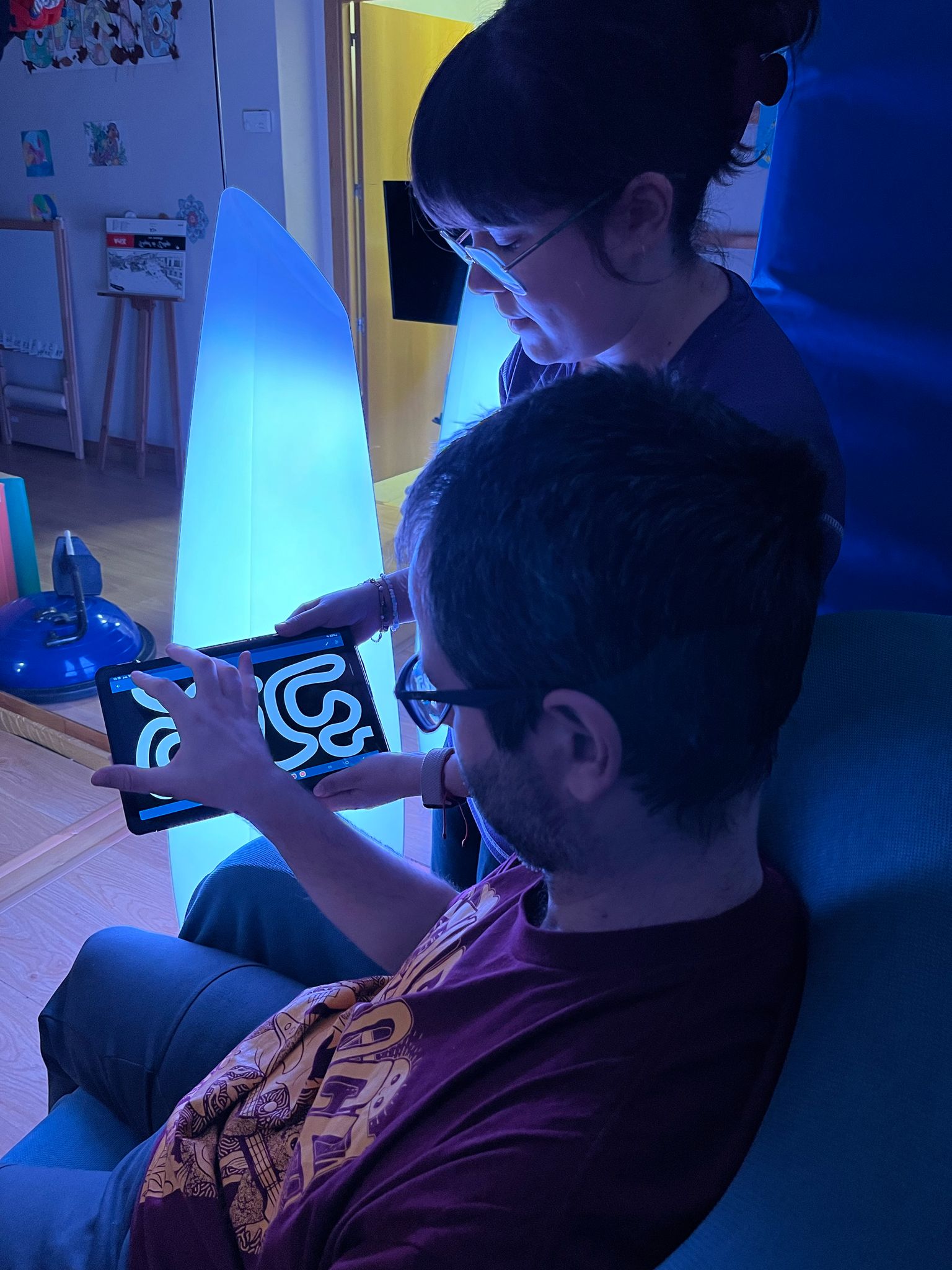
We also work with two key devices in the therapy: the Luminea lamp and fibre optics. The Luminea lamp—used in conjunction with its app—is a highly valuable resource for relaxation as well as cognitive stimulation. Activities with the Luminea lamp can be designed to target crucial skills such as:
Additionally, fibre optics are an excellent tool for working on proprioception, fine motor skills, and integration of the affected side in individuals with hemispatial neglect. Handling the luminous strands encourages upper limb mobilisation through activities such as untangling, braiding, or combing the light fibres. Fibre optics thus enable the design of therapeutic exercises that are relevant to daily life.
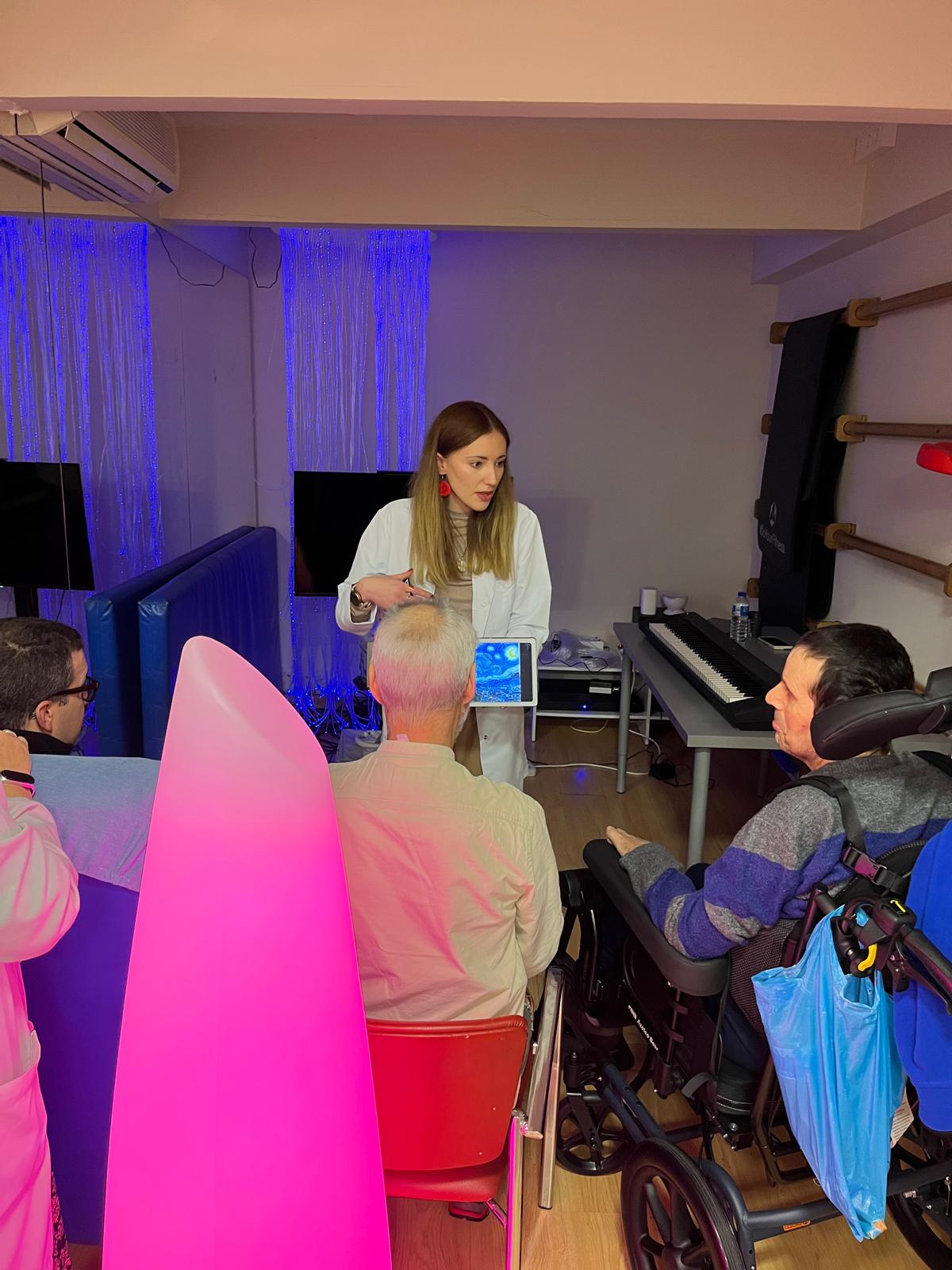
The ACERCARTE project by Eva Somolinos—using both the vibroacoustic system and the Luminea equipment—is a recently implemented programme that has helped us surpass our therapeutic goals. Using renowned paintings and sound compositions specifically created for them, these sessions offer patients a physical and sensory experience that merges art, light, and music.
The ability to feel music and sound through vibrations not only enhances the physical and emotional benefits, but also strengthens cognitive and sensory work in a holistic manner. Thus, the Vibroacoustic Kit—consisting of a sofa and cushion—is one of the most highly valued features of our multisensory room.
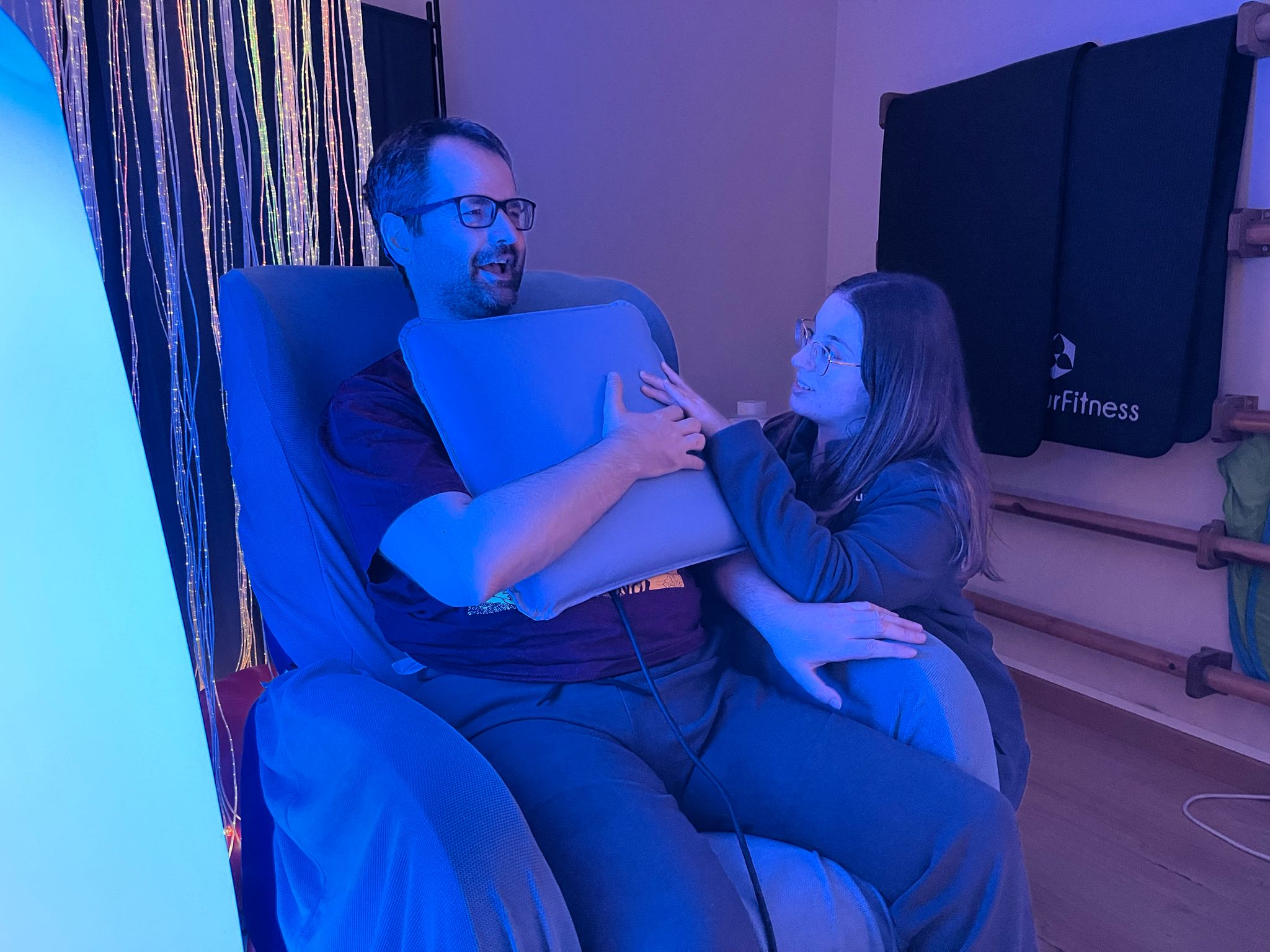
This system can play any sound, song, or audio file, adapting to the needs of each individual, activity, and therapeutic objective. Vibroacoustics play a central role in multisensory stimulation. Through the vibrations transmitted by the sofa and cushion we are able to:
We have recently introduced a new therapy at our centre: transcranial electrical stimulation. This technique, specific for neurological disorders (such as anomia, aphasia, chronic pain, motor impairments, or other post-stroke sequelae, as well as ADD, ADHD, and related conditions), when combined with multisensory work, yields even greater results.
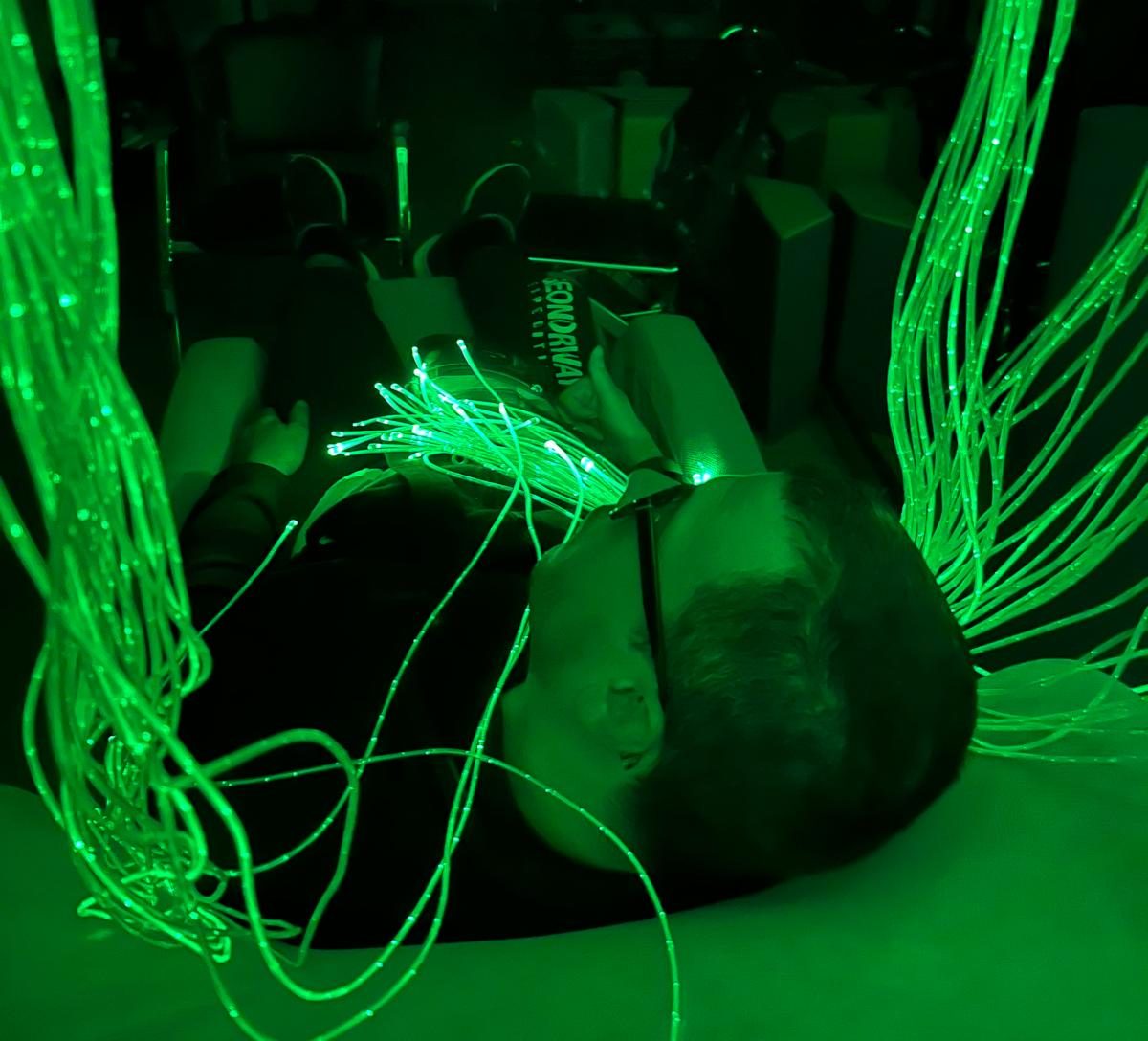
In summary, having a multisensory space not only helps achieve the aforementioned rehabilitation objectives, but also complements our clinic’s other therapeutic programmes.
At REHASALUD we firmly believe in cognitive-sensory rehabilitation as a foundation for functional recovery and the acquisition of new skills. This cognitive and sensory intervention programme, in combination with Qinera’s materials, helps to stimulate all of the senses and neural networks, thereby increasing the therapy’s effectiveness.
If you want to learn more about the benefits of Multisensory Environments or see how you could adapt it to your space, therapeutic goals, and users, you can send an email to hello@qinera.com.

17 September 2025
Multisensory environments are reshaping the way schools think about education. Instead of limiting learning to books, desks, and blackboards, they open the classroom to experiences...
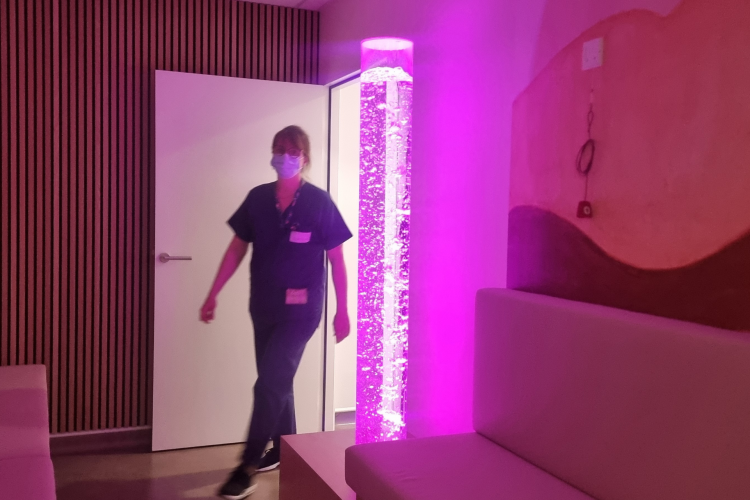
30 May 2025
At Hôpital Privé du Confluent in Nantes, France, multisensory rooms have been incorporated to enhance the patient experience. Waiting before surgery is a delicate moment....
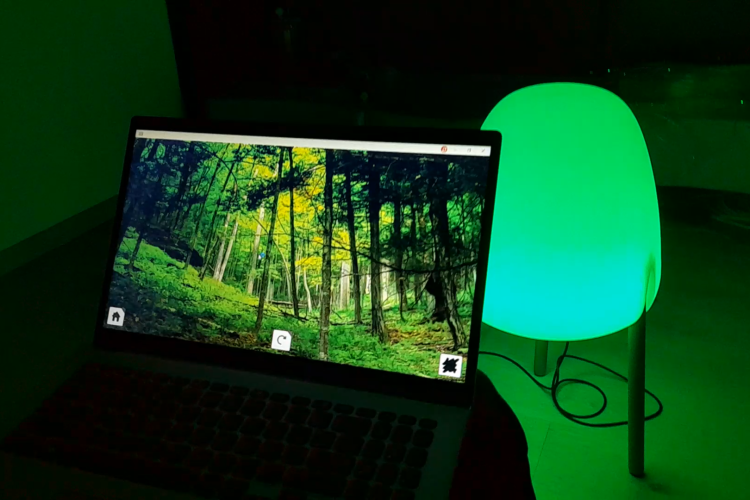
21 February 2025
Multisensory Environments are carefully designed spaces that provide controlled sensory stimulation to enhance physical, cognitive, and emotional well-being. These environments are widely used in therapy...